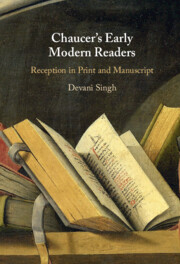Book contents
- Chaucer’s Early Modern Readers
- Chaucer’s Early Modern Readers
- Copyright page
- Dedication
- Contents
- Figures
- Acknowledgements
- Abbreviations
- Introduction
- Chapter 1 Glossing, Correcting, and Emending
- Chapter 2 Repairing and Completing
- Chapter 3 Supplementing
- Chapter 4 Authorising
- Afterword
- Bibliography
- Index of Manuscripts
- Index of Early Printed Books
- General Index
- References
Bibliography
Published online by Cambridge University Press: 08 June 2023
- Chaucer’s Early Modern Readers
- Chaucer’s Early Modern Readers
- Copyright page
- Dedication
- Contents
- Figures
- Acknowledgements
- Abbreviations
- Introduction
- Chapter 1 Glossing, Correcting, and Emending
- Chapter 2 Repairing and Completing
- Chapter 3 Supplementing
- Chapter 4 Authorising
- Afterword
- Bibliography
- Index of Manuscripts
- Index of Early Printed Books
- General Index
- References
Summary
- Type
- Chapter
- Information
- Chaucer's Early Modern ReadersReception in Print and Manuscript, pp. 230 - 253Publisher: Cambridge University PressPrint publication year: 2023
- Creative Commons
- This content is Open Access and distributed under the terms of the Creative Commons Attribution licence CC-BY-NC 4.0 https://creativecommons.org/cclicenses/

